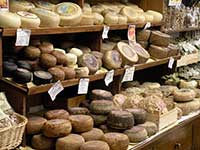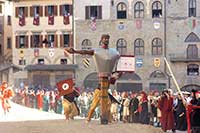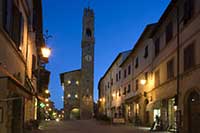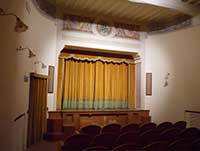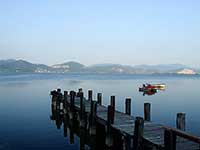| |
|
Calcio Storico Fiorentino | Renaissance era
Calcio was reserved for rich aristocrats who played every night between Epiphany and Lent.[2] Even Popes, such as Clement VII, Leo XI and Urban VIII were known to play the sport in Vatican City. The games were known to get violent as teams vied with each other to score goals. This game was probably played already in the 15th century, so much that some matches were organized on a completely frozen-over Arno river in 1490. In a historically famous occasion, the city of Florence held a match on February 17, 1530 in defiance of the imperial troops sent by Charles V, as the city was under siege. In 1574 Henry III of France attended a game of "bridge fighting" – put on in his honor during a visit to Venice; the king is recorded as saying: "Too small to be a real war and too cruel to be a game".[3]
The official rules of calcio were published for the first time in 1580 by Giovanni de' Bardi, a Florentine count.[2][4] The game is played on a field of sand with a narrow slit constituting the goal, running the width of each end. Each team comprises 27 players who are allowed to use both feet and hands to pass and control the ball. Goals (or cacce) are scored by throwing the ball over into the netting at the end of the field. There is a main referee, six linesmen and a field master. Each match is played out for 50 minutes with the winner being the team with the most goals scored.
|
 |
Calcio Storico - 24.06.2008 - Azzurri Vs. Rossi [1]
|
Modern revival
Interest in Calcio waned in the early 17th century. However, in 1930 it was reorganized as a game in Kingdom of Italy,[2] under Mussolini.
Mussolini's bold claims upon the monuments and rhetoric of ancient Rome have been the subject of a number of recent books. In The Renaissance Perfected Medina Lasansky examines the reinvention of medieval and Renaissance festivals such as Florence’s calcio. She illuminates the functioning and politics of Fascist mass and high culture, architecture, urban design, and tourism. The Renaissance Perfected is a well-argued and original look at the Italian Fascist appropriation and utilization of the Italian medieval and Renaissance heritage. [6]
Today, three matches are played each year in Piazza Santa Croce in Florence in the 3rd week of June. A team from each quartiere of the city is represented:
Santa Croce / Azzurri (Blues)
Santa Maria Novella / Rossi (Reds)
Santo Spirito / Bianchi (Whites)
San Giovanni / Verdi (Greens)
After playing each other in two opening games, the two overall winners go into the final which occurs each year on June 24; this is San Giovanni (St. John)'s Day, the Patron Saint of Florence. The modern version of calcio allows tactics such as head-butting, punching, elbowing, and choking but sucker punches and kicks to the head are banned.[2] It is also prohibited for more than one player to attack an opponent. Any violation leads to being thrown out of the game.
|
| The spirit of gladiators is still alive | Calcio storico Fiorentino
| vimeo
|
|
GLADIATORS SPIRIT'S IS STILL ALIVE Calcio storico Fiorentino from Brice Ansel on Vimeo. |
|
|
| |
|


Podere Santa Pia is an excellent base for making excursions in southern Tuscany, one of the most popular tourist destinations in the world. Tuscany nown for its enchanting landscapes, its fantastic and genuine food and beautiful towns as Florence, Pisa, Lucca and Siena. Santa Pia is an authentic holiday home in Castiglioncello Bandini, a small village in the Maremma. A generous garden sweeps down the hill with olive and downy oak trees and various areas for relaxing and soaking in the views. The cool shadow of centuries-old oak trees, the thousand colors of the garden changing at each season make of this place a natural oasis.
Holiday accomodation in Tuscany | Podere Santa Pia
|
| |
|
|
|
|
|
|
|
Podere Santa Pia |
|
Podere Santa Pia, giardino |
 |
|
|
|
|
| |
|
|
|
|
|
|
|
|
|
Gioco del Cacio al Fuson the cheese rolling competition in Pienza. |
|
Arezzo, Giostra del Saracino
|
|
Notte Bianca in Montalcino
|
|
|
|
|
|
Montisi, Teatro della Grancia
|
|
Calici di Stelle, 10 agosto
|
|
Torre del Lago | The Puccini Festival
|
| |
|
|
|
|
Rules Calcio Storico
Matches last 50 minutes and are played on a field covered in sand, twice as long as it is wide ( approximately 80x40 meters ). A white line divides the field into two identical squares, and a goal net runs the width of each end. Each team has 27 players and no substitutions are allowed for injured or expelled players. The teams are made up of four Datori indietro (goalkeepers), 3 Datori innanzi (fullbacks), 5 Sconciatori (halfbacks), 15 Innanzi o Corridori (forwards). The Captain and Standard Bearer's tent sits at the center of the goal net. They do not actively participate in the game, but can organize their teams and sometimes act as referees, mainly to calm down their players or to stop fights.
The Referee and his six linesmen referee the match in collaboration with the Judge Commissioner, who remains off the field. The referee, above everyone else, is the Master of the Field. He makes sure the games runs smoothly, stepping into the field only to maintain discipline and reestablish order in case of a fight on the field.
The game starts when the Pallaio throws the ball towards the center line, then at the first whistle, 15 forwards or Corridori begin fighting - punching, kicking, tripping, hacking, tackling, and wrestling with each other in the brutal and often savage contests designed to an effort to tire the opponents out and punch, kick, or strike a hole in the opposition defenses, but which often descends into an all-out brawl. Then followed by a small cannon firing; the shot announces the beginning of the contest.
From this moment on, the players try by any means necessary to get the ball into the opponents' goal also called caccia. The teams change sides with every caccia or goal scored. It's important to shoot with precision, because every time a player throws or kicks the ball above the net, the opposing team is awarded with half a caccia. The game ends after 50 minutes and the team which scored the most cacce wins.
The prize is also interesting, because along with the Palio, the winning team used to receive a Chianina, a type of cow. However, the prize has been reduced to a free dinner for the winning team; the players earn no other compensation.[5]
|
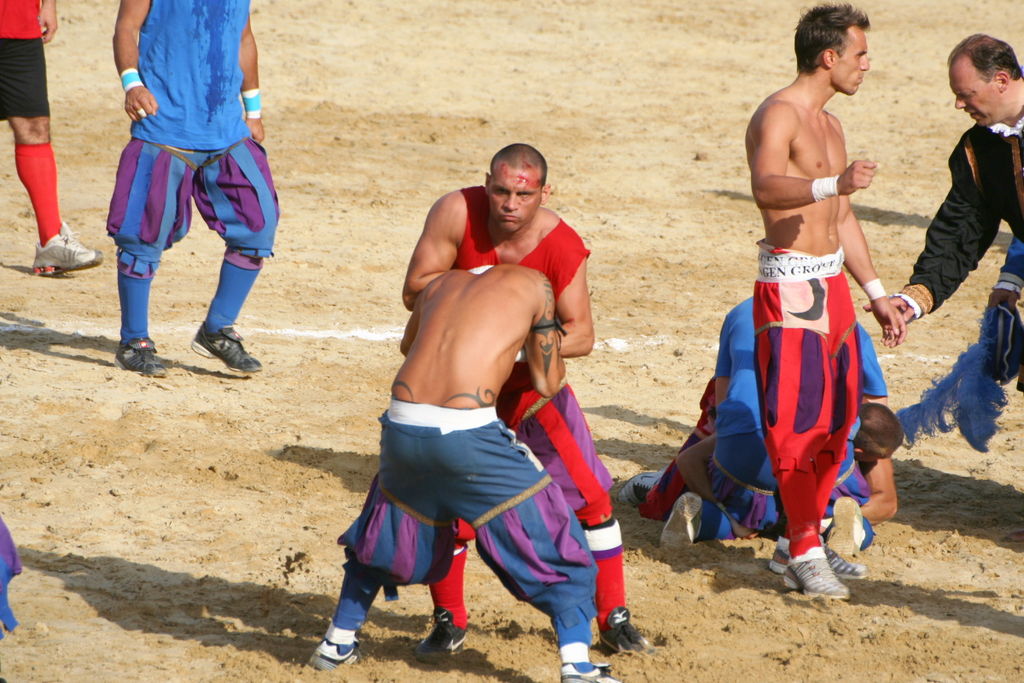 |
Calcio Storico - 24.06.2008 - Azzurri Vs. Rossi [1]
|

[1] Fonte: Lorenzo Nocciol, licensed under the Creative Commons Attribution-Share Alike 3.0 Unported license.
[2] Halpern, J. Balls and Blood, Sports Illustrated. Vol 109, No. 4: August 4, 2008, p. 42.
[3] "A Point of View: Sporting spectacle on the piazza". BBC NEWS. 12 July 2013.
[4] Bardi, Cosimo. Discorso sopra il giuoco del calcio fiorentino del Puro Accademico Alterato. In Firenze : nella Stamperia de' Giunti, 1580
[5] Borden, Sam (2015-07-01). "A Most Dangerous Game". New York Times. Retrieved 2015-07-01.
[6] Ruth Ben-Ghiat, New York University. In The Renaissance Perfected, Medina Lasansky discusses the ways in which Italy’s fascist government drew upon medieval and Renaissance architectural styles and cultural traditions to gain political support and to strengthen Italy’s international image. She examines the reinvention of medieval and Renaissance festivals such as Siena’s palio and Florence’s calcio.
[The Renaissance Perfected: Architecture, Spectacle, and Tourism in Fascist Italy. University Park: Pennsylvania State University Press, 2004.]
|
|
|








